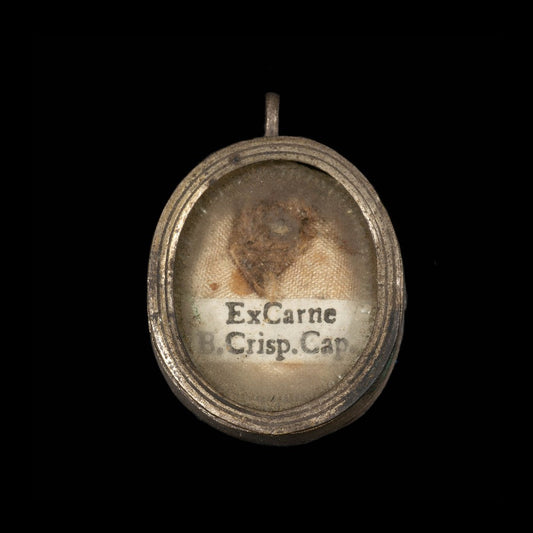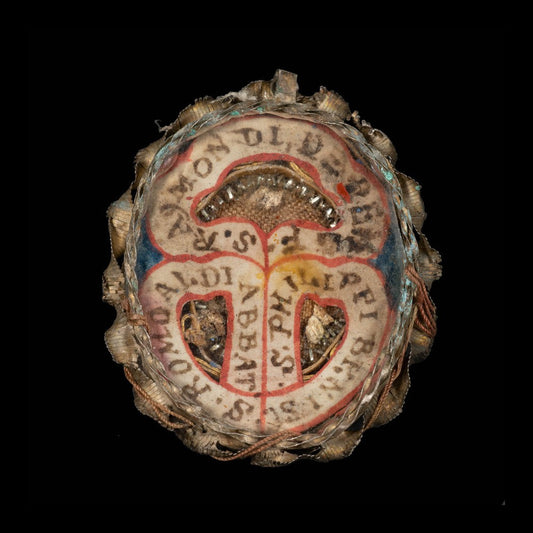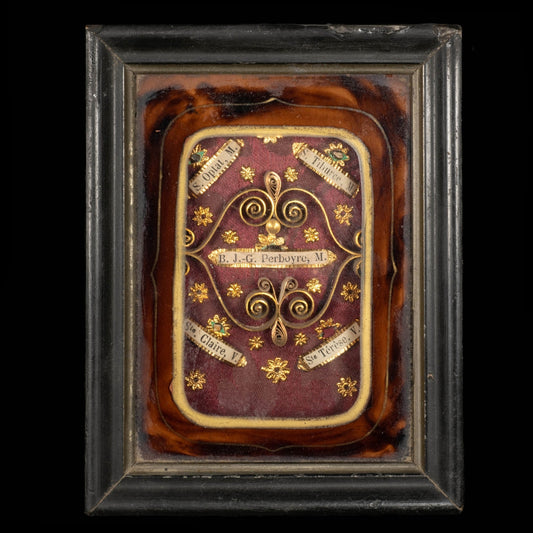Relic, a term derived from the Latin "reliquiae" literally meaning "remains", represent the bone fragments or objects in contact with holy bodies. These elements are of particular importance in the Christian faith, symbolizing proximity to sacred figures.
The Legacy of Relics in the Christian Religion
Initially, relics were carefully preserved in church altars, testifying to their spiritual value. However, their cult has evolved over time, giving birth to a multitude of containers dedicated to their preservation and magnification.
Let's delve into the spiritual and cultural heritage of relics in the Christian religion. These sacred objects, tangible testimonies of faith, have played a central role throughout Christian history, symbolizing closeness to the saints and strengthening the spiritual bonds between believers and the divine.
Diversity of Religious Containers:
The richness of this tradition lies in the impressive variety of containers. Shrines, reliquaries, monstrances, paintings, chests, statues, custodes, rosaries, medallions: each type of receptacle has been meticulously designed to magnify and venerate these sacred objects.
Shrines: These precious boxes, often richly decorated. Their artistic design and refinement bear witness to the solemnity accorded to the relics they contain.
Monstrances: Intended to display consecrated hosts, these liturgical objects also play an essential role in showcasing the relics. Their artistic elegance makes them centerpieces during religious ceremonies.
Paintings: The artistic representation of relics through paintings not only allows them to be visually preserved, but also allows them to be shared with the community. These works of art become spiritual vectors, transmitting their symbolic power.
Chests: Sturdy and often ornately decorated, chests are designed to provide physical and spiritual protection. Their presence in churches and homes underlines the importance of preserving these sacred remains.
Statues: Statues represent a tangible form of devotion to the saints. They visually embody spirituality and invite worshipers to connect more intimately with holy figures.
Custodes: These specific containers, often small, are dedicated to the conservation of small relics. Their careful design makes them valuable guardians of sacred fragments.
Rosaries: Rosaries, used for prayer and meditation, can also incorporate small relics. They thus become instruments of personal devotion, strengthening the link between the believer and spirituality.
Medallions: Medallions, worn as sacred talismans, are often used to hold tiny relics. They allow the faithful to maintain a constant connection with holiness.
This diversity of religious containers testifies to human creativity and the depth of faith, offering believers a multitude of ways to celebrate and perpetuate the heritage of relics in the Christian religion. Each object thus becomes a precious link in the chain that connects the spiritual to the tangible, the past to the present, and the divine to the human.
The 17th Century: Expansion of Reliquaries in Domestic Spaces
During the 17th century, a significant transformation marked the relationship between reliquaries and domestic spaces. This century has seen a remarkable expansion of the presence of relics beyond the sacred precincts of churches, paving the way for a new expression of spirituality in the home.
Presence in Homes:
Reliquaries, formerly confined to church altars, have found their place within homes. This migration towards domestic spaces has transformed the traditional dynamic of the veneration of saints. The faithful sought to integrate spirituality into their daily lives by bringing relics into their homes.
Ornament of House Thresholds:
The thresholds of houses were the first witnesses of this expansion. Reliquaries, in the form of elaborate shrines or richly decorated chests, were carefully placed at the entrance to homes. This symbolic practice served to sanctify the domestic space, establishing a tangible connection between the divine and the everyday.
Presence on Chimneys:
The fireplaces, the nerve centers of 17th century homes, also housed reliquaries. These sacred objects were positioned with devotion, creating an atmosphere imbued with spirituality within the home. The dancing flames of the fireplace almost seemed to dance in harmony with the glow of the reliquaries, creating an environment conducive to reflection and prayer.
Hanging above the Beds:
A fascinating practice of this era was the hanging of reliquaries above beds. This symbolic gesture was loaded with meaning, instilling spiritual protection during sleep. The relics, thus arranged, became nocturnal guardians, watching over the dreams and tranquility of the occupants.
This expansion of reliquaries into domestic spaces in the 17th century was not simply limited to pious decoration, but demonstrated a deep desire to integrate spirituality into all aspects of daily life. Homes thus became personal sanctuaries, imbued with the sacred presence of relics, offering residents an intimate connection with faith and religious traditions. This landmark development helped shape the way relics were perceived and venerated, expanding their reach beyond church walls to become constant companions in daily life.
Intensification of Trade
The growing presence of reliquaries in homes is accompanied by an increase in the trade in relics . The 17th century saw a significant expansion of this practice, attracting the attention of the Church.
Church Regulation: Ensuring Authenticity
The intensification of the trade in relics has raised concerns within the Church, which has responded by taking measures to regulate this practice and ensure the authentic origin of the precious artifacts.
The Quest for Authenticity:
Faced with the growth of the market, the Church embarked on a determined quest to preserve the spiritual integrity of these sacred objects. The desire to maintain true spiritual connection with saints and religious figures has prompted the Church to take significant initiatives.
Trade Regulation :
Aware of the risks associated with the increasing commercialization of relics, the Church has put in place strict guidelines and regulatory mechanisms. Decrees have been issued to regulate provenance, sale, and authentication, erecting barriers to ensure that these artifacts have authentic spiritual significance.
Control of Religious Transactions:
The Church has also strengthened its control over transactions, ensuring that they are carried out with respect and devotion. Questionable business practices were discouraged, and sanctions were provided to deter any acts compromising the integrity of the relics.
Awareness and Education:
At the same time, the Church has undertaken awareness-raising and educational initiatives among the faithful and merchants. Campaigns have been launched to explain the spiritual importance of the relics and highlight the need to treat them with the respect they deserve.
This rigorous regulation of the trade in relics by the Church demonstrates its responsibility towards the preservation of spiritual heritage and its commitment to ensuring that the faithful can benefit from an authentic religious experience. These measures made it possible to maintain the sacredness of the relics, thus ensuring that their value transcends material aspects to remain anchored in faith and sincere devotion.
More about relics























